Albert Michelson
description: American physicist, speed of light measurement
36 results
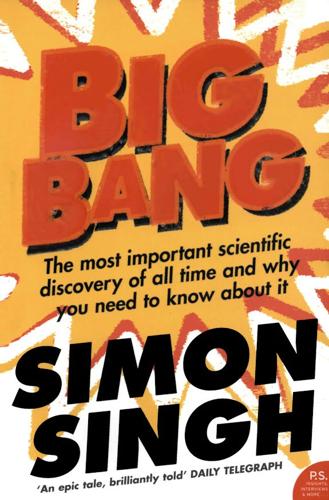
Big Bang
by
Simon Singh
Published 1 Jan 2004
We believe it is a real thing, with great rigidity in comparison with its density: it may be made to vibrate 400 million million times per second; and yet be of such density as not to produce the slightest resistance to any body going through it. In other words, the ether was incredibly strong, yet strangely insubstantial. It was also transparent, frictionless and chemically inert. It was all around us, yet it was clearly hard to identify because nobody had ever seen it, grabbed it or bumped into it. Nevertheless, Albert Michelson, America’s first Nobel Laureate in physics, believed that he could prove its existence. Michelson’s Jewish parents had fled persecution in Prussia in 1854, when he was just two years old. He grew up and studied in San Francisco before going on to join the US Naval Academy, where he graduated a lowly twenty-fifth in seamanship, but top in optics.
…
One swims directly across the river to the closest point on the opposite bank, then turns around and swims back. The other stays on one side of the river, swimming downstream a distance (measured along the bank) exactly equal to the width of the river, then swims back to the start. Who wins? [See Figure 20 for the solution.] Figure 20 Albert Michelson used this swimming puzzle to explain his ether experiment. The two swimmers play the same role as the two beams of light heading in perpendicular directions, then both returning to the same starting point. One swims first with and then against the current, while the other swims across the current – just as one light beam travels with and against the ether wind, and the other across it.
…
Civilisation is but a huge mutual insurance company against human selfishness.’ Edwin resolved the conflict between his own ambition and his father’s pragmatism by formally studying law to pacify his father, while also completing enough courses in physics to keep alive his dream of becoming an astronomer. The Chicago physics department was headed by Albert Michelson, who had dispensed with the ether and won America’s first Nobel Prize for Physics in 1907. The university was also home to Robert Millikan, who would go on to become America’s second Nobel Laureate in physics, and who took on Hubble as his part-time laboratory assistant while Edwin was still an undergraduate.
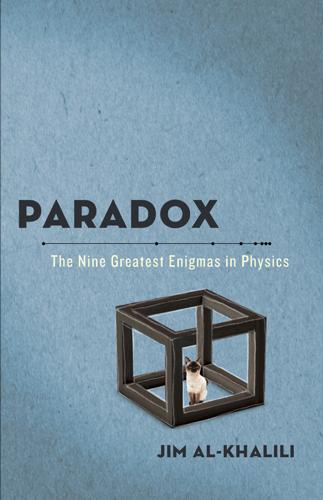
Paradox: The Nine Greatest Enigmas in Physics
by
Jim Al-Khalili
Published 22 Oct 2012
It was labeled the luminiferous (“light-carrying”) ether and a major effort was made to prove its existence. Of course, it had to have certain properties: for instance, it had to permeate the whole galaxy in order for distant starlight to reach us through the vacuum of space. In 1887, at a college in Ohio, two American physicists, Albert Michelson and Edward Morley, conducted one of the most famous experiments in the history of science. They had devised a method for measuring very accurately the time it takes for a light beam to cover a fixed distance. But before I describe what they found, there is another property of waves that I need to mention, which is that the speed at which waves travel does not depend on how fast their source is moving.
…
Surely, as I explained before, you see the passenger moving at walking pace while the platform observer sees him whizz past at train speed, plus a little more. Just eight years before Michelson and Morley achieved their disturbing finding, Albert Einstein had been born in Ulm in Germany. That same year, 1879, Albert Michelson, working at a U.S. Naval Observatory in Washington, had measured the speed of light to an accuracy of about one part in ten thousand. He wasn’t the first to do this and would not be the last, but it would stand him in good stead when he and Morley conducted their famous experiment. As for the young Einstein, although of course he was completely unaware of the astonishing result that Michelson and Morley announced to the world, he was nevertheless soon pondering the unusual properties of light himself by devising imaginary experiments.
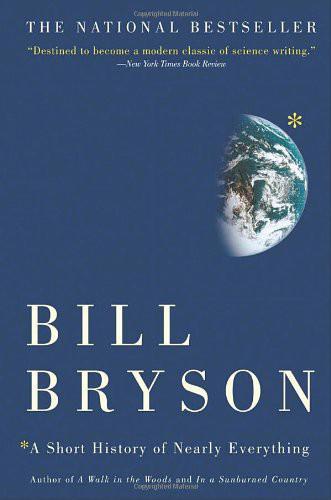
A Short History of Nearly Everything
by
Bill Bryson
Published 5 May 2003
Undaunted—well, perhaps mildly daunted—Planck turned to other matters.*16 We shall turn to these ourselves in a moment, but first we must make a slight (but relevant!) detour to Cleveland, Ohio, and an institution then known as the Case School of Applied Science. There, in the 1880s, a physicist of early middle years named Albert Michelson, assisted by his friend the chemist Edward Morley, embarked on a series of experiments that produced curious and disturbing results that would have great ramifications for much of what followed. What Michelson and Morley did, without actually intending to, was undermine a longstanding belief in something called the luminiferous ether, a stable, invisible, weightless, frictionless, and unfortunately wholly imaginary medium that was thought to permeate the universe.
…
Thomson was insisting: “The ether is not a fantastic creation of the speculative philosopher; it is as essential to us as the air we breathe”—this more than four years after it was pretty incontestably established that it didn't exist. People, in short, were really attached to the ether. If you needed to illustrate the idea of nineteenth-century America as a land of opportunity, you could hardly improve on the life of Albert Michelson. Born in 1852 on the German–Polish border to a family of poor Jewish merchants, he came to the United States with his family as an infant and grew up in a mining camp in California's gold rush country, where his father ran a dry goods business. Too poor to pay for college, he traveled to Washington, D.C., and took to loitering by the front door of the White House so that he could fall in beside President Ulysses S.
…
At a single high school track meet in 1906, he won the pole vault, shot put, discus, hammer throw, standing high jump, and running high jump, and was on the winning mile-relay team—that is seven first places in one meet—and came in third in the broad jump. In the same year, he set a state record for the high jump in Illinois. As a scholar he was equally proficient, and had no trouble gaining admission to study physics and astronomy at the University of Chicago (where, coincidentally, the head of the department was now Albert Michelson). There he was selected to be one of the first Rhodes scholars at Oxford. Three years of English life evidently turned his head, for he returned to Wheaton in 1913 wearing an Inverness cape, smoking a pipe, and talking with a peculiarly orotund accent—not quite British but not quite not—that would remain with him for life.
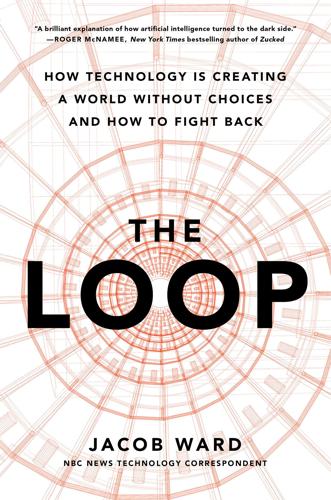
The Loop: How Technology Is Creating a World Without Choices and How to Fight Back
by
Jacob Ward
Published 25 Jan 2022
And if it were moving across an aether, that aether should give off some sort of wind, and Earth’s movement should be affected depending on whether the Earth was traveling with that wind or against it. And as these granular questions became a priority, cutting-edge experiments began to reveal that generations of scientists had been entirely, embarrassingly wrong. Between April and July 1887, a pair of American physicists, Albert Michelson and Edward Morley, conducted experiments on the outskirts of Cleveland at what is now Case Western Reserve University. Michelson had prototyped the interferometer they’d be using for the work while doing research for the navy, and spent most of the prior few years laboring so relentlessly toward the goal of detecting aether wind that he’d had a nervous breakdown in 1885.
…
With the idea of a constant medium no longer workable, old theories collapsed, new theories were necessary, and a physicist born in Germany just a few years before Michelson and Morley emerged disappointed from their basement lab came up with the best theory around. In 1931, long after he’d achieved fame for his scientific achievements, Albert Einstein met Albert Michelson for the first and only time at a dinner in Einstein’s honor at Caltech. According to his biographer Albrecht Fölsing, Einstein gave an after-dinner speech for a crowd of two hundred that included the aging physicist, and thanked Michelson directly for the work he had done when Einstein “was still a little boy, hardly three feet high.”
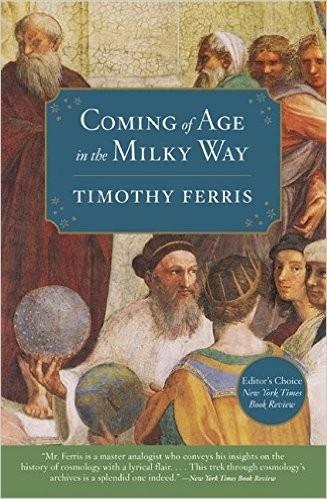
Coming of Age in the Milky Way
by
Timothy Ferris
Published 30 Jun 1988
Time: 1877 Noteworthy Events: David Gill measures parallax of Mars during its opposition, deduces distance to the sun of ninety-three million miles. Time: 1879 Noteworthy Events: Albert Michelson, employing Foucault’s principle, determines velocity of light. Time: 1883 Noteworthy Events: Henry Rowland’s diffraction grating greatly improves the resolution of spectrographs. Time: 1884 Noteworthy Events: Johann Balmer determines harmonic sequence of hydrogen lines, initiating line of inquiry that will lead to investigation of the electron shells of atoms. Time: 1887 Noteworthy Events: Albert Michelson and Edward Morley perform the final and most precise in a series of experiments showing that space cannot be filled with the aether that had been thought to be responsible for transmitting light.
…
.* To measure this “aether drift”—as it was called, though what was thought to be drifting was not the aether but the earth—would of course be a delicate matter, since the velocity of the earth amounts to but a tiny fraction of the velocity of light. But by the latter part of the nineteenth century, technology had advanced to a sufficient degree of precision to make the task feasible. The critical experiment was conducted in the 1880s by the physicist Albert Michelson (who devoted his career to the study of light, he said, “because it’s so much fun”) and the chemist Edward Morley. Aether drift theory held that if the velocity of light was constant relative to a stationary, all-pervading aether, then when the earth in its orbit was moving away from star A and toward star B, the observed speed of the light coming from star ?
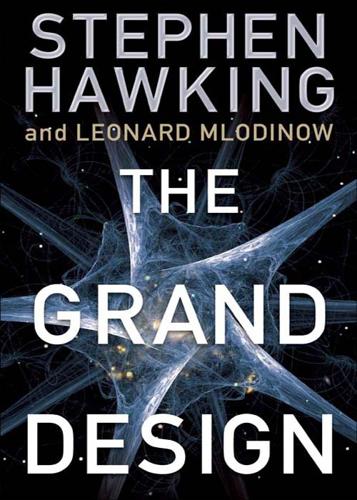
The Grand Design
by
Stephen Hawking
and
Leonard Mlodinow
Published 14 Jun 2010
Maxwell was talked out of publishing his idea in Proceedings of the Royal Society by its editor, who didn’t think the experiment would work. But in 1879, shortly before he died at age forty-eight of painful stomach cancer, Maxwell sent a letter on the subject to a friend. The letter was published posthumously in the journal Nature, where it was read by, among others, an American physicist named Albert Michelson. Inspired by Maxwell’s speculation, in 1887 Michelson and Edward Morley carried out a very sensitive experiment designed to measure the speed at which the earth travels through the ether. Their idea was to compare the speed of light in two different directions, at right angles. If the speed of light were a fixed number relative to the ether, the measurements should have revealed light speeds that differed depending on the direction of the beam.
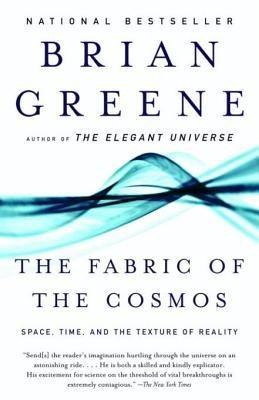
The Fabric of the Cosmos
by
Brian Greene
Published 1 Jan 2003
Indeed, with the successful incorporation of electricity and magnetism, there was a growing sense that theoretical physics would soon be complete. Physics, some suggested, was rapidly becoming a finished subject and its laws would shortly be chiseled in stone. In 1894, the renowned experimental physicist Albert Michelson remarked that “most of the grand underlying principles have been firmly established” and he quoted an “eminent scientist”—most believe it was the British physicist Lord Kelvin—as saying that all that remained were details of determining some numbers to a greater number of decimal places.1 In 1900, Kelvin himself did note that “two clouds” were hovering on the horizon, one to do with properties of light’s motion and the other with aspects of the radiation objects emit when heated,2 but there was a general feeling that these were mere details, which, no doubt, would soon be addressed.
…
For example, if you swim through water toward an oncoming water wave, the wave approaches you more quickly; if you swim away from the wave, it approaches you more slowly. Similarly, if you move through the supposed aether toward or away from an oncoming light wave, the light wave’s approach should, by the same reasoning, be faster or slower than 670 million miles per hour. In 1887, however, when Albert Michelson and Edward Morley measured the speed of light, time and time again they found exactly the same speed of 670 million miles per hour regardless of their motion or that of the light’s source. All sorts of clever arguments were devised to explain these results. Maybe, some suggested, the experimenters were unwittingly dragging the aether along with them as they moved.
…
Imagine that we live on a three-brane that surrounds a region with four space dimensions (much as the two-dimensional skin of an apple surrounds the apple’s three-dimensional interior). The holographic principle in this setting would say that our three-dimensional perceptions would be the shadows of four-dimensional physics taking place in the region surrounded by our brane. Notes Chapter 1 1. Lord Kelvin was quoted by the physicist Albert Michelson during his 1894 address at the dedication of the University of Chicago’s Ryerson Laboratory (see D. Kleppner, Physics Today, November 1998). 2. Lord Kelvin, “Nineteenth Century Clouds over the Dynamical Theory of Heat and Light,” Phil. Mag. Ii—6th series, 1 (1901). 3. A. Einstein, N. Rosen, and B.
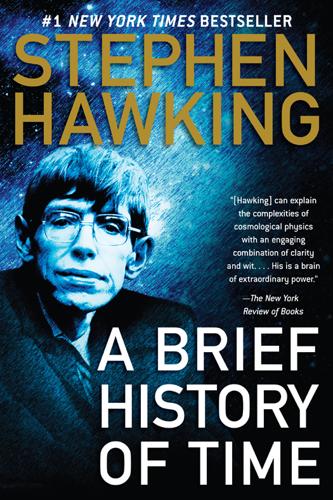
A Brief History of Time
by
Stephen Hawking
Published 16 Aug 2011
In particular, as the earth was moving through the ether on its orbit round the sun, the speed of light measured in the direction of the earth’s motion through the ether (when we were moving toward the source of the light) should be higher than the speed of light at right angles to that motion (when we are not moving toward the source). In 1887 Albert Michelson (who later became the first American to receive the Nobel Prize for physics) and Edward Morley carried out a very careful experiment at the Case School of Applied Science in Cleveland. They compared the speed of light in the direction of the earth’s motion with that at right angles to the earth’s motion.
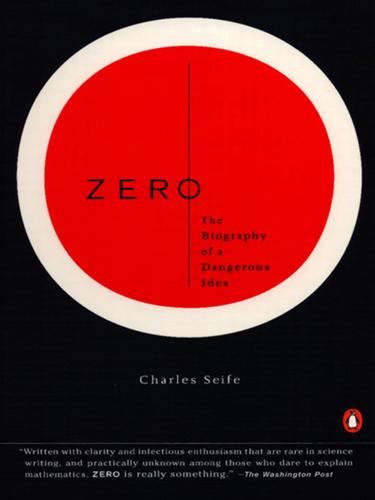
Zero: The Biography of a Dangerous Idea
by
Charles Seife
Published 31 Aug 2000
For an observer approaching the boy, the stones seem to be going faster than for an observer who is running away; the velocity of the stones seems to depend on your direction and speed. In the same way, the speed of light should depend on whether you are running toward or running away from the lightbulb that’s shining on you. In 1887 the American physicists Albert Michelson and Edward Morley tried to measure this effect. They were baffled when they found no difference; the speed of light was the same in every direction. How could this be? Again, it was the young Einstein who had the answer in 1905. And again, very simple assumptions would have enormous consequences.
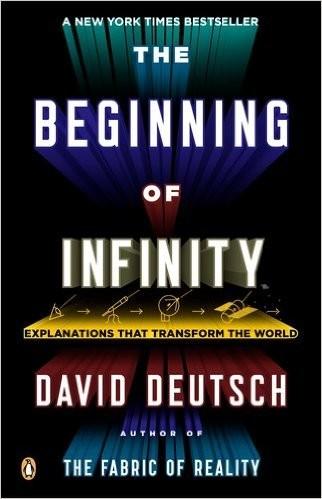
The Beginning of Infinity: Explanations That Transform the World
by
David Deutsch
Published 30 Jun 2011
Trying to know the unknowable leads inexorably to error and self-deception. Among other things, it creates a bias towards pessimism. For example, in 1894 the physicist Albert Michelson made the following prophecy about the future of physics: The more important fundamental laws and facts of physical science have all been discovered, and these are now so firmly established that the possibility of their ever being supplanted in consequence of new discoveries is exceedingly remote…Our future discoveries must be looked for in the sixth place of decimals. Albert Michelson, address at the opening of the Ryerson Physical Laboratory, University of Chicago, 1894 What exactly was Michelson doing when he judged that there was only an ‘exceedingly remote’ chance that the foundations of physics as he knew them would ever be superseded?
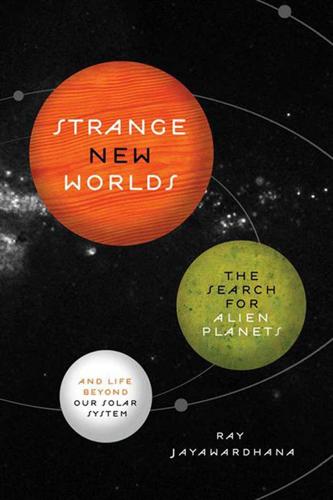
Strange New Worlds: The Search for Alien Planets and Life Beyond Our Solar System
by
Ray Jayawardhana
Published 3 Feb 2011
When you see an array of shimmering rainbow colors on a puddle in the street, you’re seeing the result of interference, the cancellation of light waves on a thin flm of oil on the water’s surface. Even though optical interferometry is only now coming of age, its origins date back nearly a century to the efforts of Albert Michelson. Best known for measuring the speed of light, he won a Nobel Prize in Physics in 1907. Michelson knew that the angular resolution of a telescope—its ability to distinguish two stars that appear very close to each other—depended only on the size of the primary lens or mirror. If we double the size, we double the resolution.
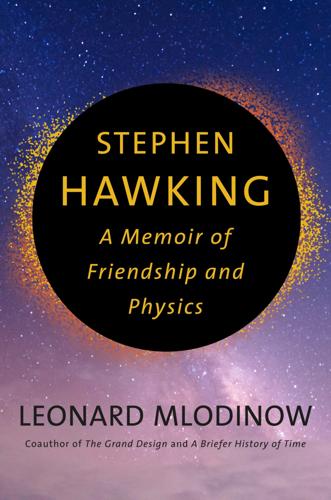
Stephen Hawking
by
Leonard Mlodinow
Published 8 Sep 2020
Physicists in the late nineteenth century were so confident about their theories that in April 1900, Lord Kelvin, one of the most famous scientists of the day, gave a speech about the future of physics in which he implied that all that was left to finish the “physicist’s job” was to clear up two clouds in an otherwise clear blue sky. One of those clouds was an experiment on the speed of light by American physicists Albert Michelson and Edward Morley. The other was a phenomenon called blackbody radiation. These were just little anomalies that we’d soon explain within our existing framework of ideas, Kelvin believed. As it turned out, instead of viewing those issues as two little clouds in a blue sky, it would have been more accurate to envision two massive icebergs confronting a ship in the ocean.

From eternity to here: the quest for the ultimate theory of time
by
Sean M. Carroll
Published 15 Jan 2010
To check that, we’ll allow you to remove the curtains from the windows and let some light come in from the outside world. When you measure the velocity of the light that was emitted by some outside source, once again you find that it doesn’t depend on the velocity of your own spaceship. A real-world version of this experiment was performed in 1887 by Albert Michelson and Edward Morley. They didn’t have a spaceship with a powerful rocket, so they used the next best thing: the motion of the Earth around the Sun. The Earth’s orbital velocity is about 30 kilometers per second, so in the winter it has a net velocity of about 60 kilometers per second different from its velocity in the summer, when it’s moving in the other direction.
…
measurement. See also observation Méchanique Céleste (Laplace) medium, time as memory and cause and effect and cognitive instability and life and Maxwell’s Demon and physicality of information and possibilism and remembering the future mesons Messier, Charles Michell, John Michelson, Albert Michelson-Morley experiment microstates and arrow of time and black holes and closed timelike curves and coarse-graining counting and directionality of time and empty space and entropy and evolution of space of states and inflationary cosmology and memory and mixing and possibilism and Principle of Indifference and statistical mechanics and string theory and time asymmetry microwave background radiation.
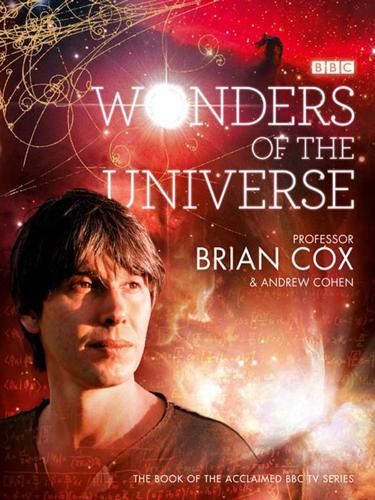
Wonders of the Universe
by
Brian Cox
and
Andrew Cohen
Published 12 Jul 2011
Betelgeuse has long been familiar to stargazers, notable for its brightness and reddish tinge that is clearly visible to the naked eye. Sir John Herschel studied the star intensely in the nineteenth century, recording the dramatic variations in its brightness. However, it was only when three astronomers from the Mount Wilson Observatory in California tried to measure its diameter that we realised this was no ordinary star. Albert Michelson, Francis Pease and John Anderson used a specially designed telescope to measure the scale of this red star using a technique known as interferometry. By measuring the angular diameter (the apparent size of an object from our position on Earth), they came up with a number that, although it’s been refined since, revealed something profound: Betelgeuse is a true giant in every sense.

Collider
by
Paul Halpern
Published 3 Aug 2009
Many nineteenth-century physicists believed in a dilute substance, called ether, filling all of space and serving as the conduit for luminous vibrations. One prediction of that hypothesis is that light’s measured speed should vary with the direction of the ether wind. A famous 1887 experiment by American researchers Albert Michelson and Edward Morley disproved the ether hypothesis by showing that the speed of light is the same in all directions. Still, given the compelling analogy to material waves, it was hard for the scientific community to accept that light is able to move through sheer emptiness. The constancy of the speed of light in a vacuum raised another critical question.

Whiplash: How to Survive Our Faster Future
by
Joi Ito
and
Jeff Howe
Published 6 Dec 2016
We’ve learned that we can’t command or control the weather, and in fact we’ve had limited success controlling complex systems of our own making, be that protecting sensitive networks from cyber attacks or using monetary policy to influence the markets. If there is one thing on which the otherwise disparate researchers, scientists, and thinkers throughout this book might agree, it’s that we are only now learning enough to discover just how little we know. It’s difficult to believe that in 1894 the Nobel Prize–winning physicist Albert Michelson could say that “it seems probable that most of the grand underlying [scientific] principles have been firmly established.”15 All that remained, he seemed to believe, would be to tie up a few loose ends. Within thirty years the theory of relativity would render all such statements absurd displays of hubris.
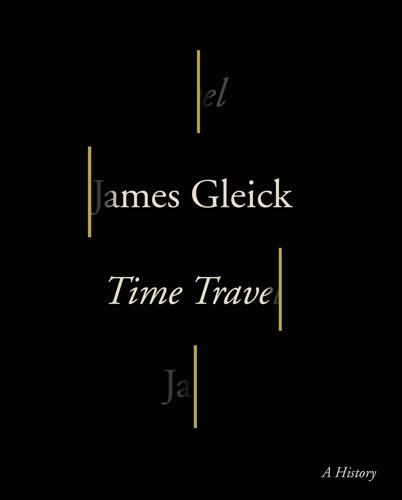
Time Travel: A History
by
James Gleick
Published 26 Sep 2016
Those light waves, for example—so clearly waves, according to the mathematics, but waves in what? Sound needs air or water or other substance to carry the vibrations. Light waves likewise implied an unseen medium, the so-called ether—“luminiferous,” or light bearing. Naturally experimentalists were trying to detect this ether, with no success. Albert Michelson and Edward Morley came up with a clever experiment in 1887 to measure the difference between the speed of light in the direction of the earth’s motion and the speed of light at right angles to it. They couldn’t find any difference at all. Was the ether necessary? Or was it possible to think purely of an electrodynamics of moving bodies, through empty space?
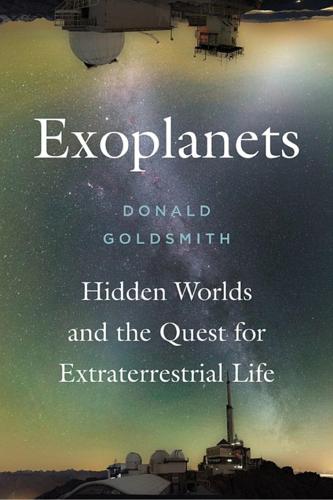
Exoplanets: Hidden Worlds and the Quest for Extraterrestrial Life
by
Donald Goldsmith
Published 9 Sep 2018
As we have seen, in visible light stars typically outshine their planets by a factor of a billion or so, whereas in the infrared this number diminishes a thousandfold, to about a million. On the other hand, visible light offers much richer possibilities for examining a planet without overwhelming interference from the star nearby. Optical interferometry does exist and has demonstrated its usefulness ever since Albert Michelson, the first American to win the Nobel prize in physics, employed an interferometer at the 100-inch reflecting telescope at the Mount Wilson Observatory in California to make the first measurement of a star’s diameter—in this case, the red supergiant Betelgeuse in Orion’s shoulder. Nearly a century later, astronomers have created optical interferometers at the Palomar Observatory in California and the Mauna Kea Observatory in Hawaii.

How Many Friends Does One Person Need? Dunbar’s Number and Other Evolutionary Quirks
by
Robin Dunbar
and
Robin Ian MacDonald Dunbar
Published 2 Nov 2010
In 1987, the prestigious Cleveland Orchestra under its then principal conductor Christoph von Dohnányi gave the world premiere of the latest work by the American minimalist composer Philip Glass. It was a piece entitled The Light and had been commissioned to celebrate the achievement of two local boys, Albert Michelson and Edward Morley, exactly one hundred years before. Now known to every physics student as the Michelson–Morley experiments, their work had finally put paid to the then received wisdom that space is filled with an ether through which celestial bodies and such phenomena as light travel, so paving the way for Einstein’s theory of relativity just two decades later.
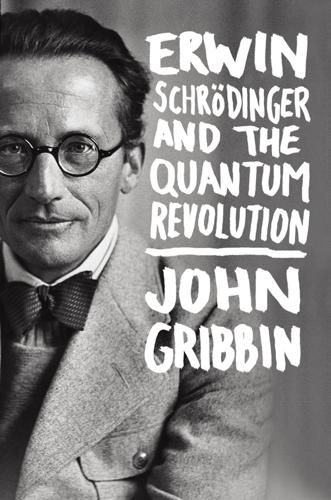
Erwin Schrodinger and the Quantum Revolution
by
John Gribbin
Published 1 Mar 2012
Einstein’s special theory of relativity is based upon the postulate that the measured speed of light is the same for all observers, no matter where they are or how they are moving, and this is borne out by a variety of experiments. The key practical evidence, as of the 1920s, came from a series of experiments carried out by Albert Michelson (1852–1931) and Edward Morley (1838–1923), dating back to the 1880s. In 1921, a similar experiment was carried out at the top of Mount Wilson, the site of an astronomical observatory in California, and seemed to show a slightly different result from measurements made at sea level. It was this claim that prompted Einstein to express his disbelief by making his famous comment “The Good Lord is subtle, but he is not malicious.”
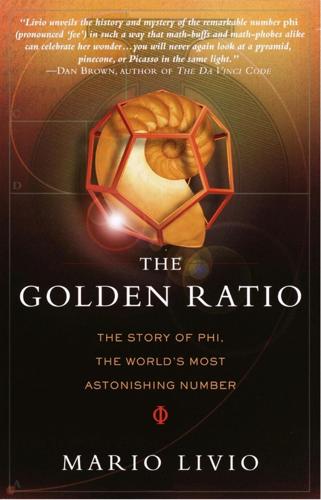
The Golden Ratio: The Story of Phi, the World's Most Astonishing Number
by
Mario Livio
Published 23 Sep 2003
Young, a child prodigy who spoke eleven languages by age sixteen, performed an experiment in which he passed light through two slits and demonstrated that the light on the viewing surface was “divided by dark stripes.” Young's results, which were followed by impressive theoretical work by French engineer Augustin Fresnel in 1815 to 1820, initiated a conversion of physicists to the wave theory. Later experiments conducted by the French physicist Léon Foucault in 1850 and by American physicist Albert Michelson in 1883 showed unambiguously that the refraction of light as it passes from air to water also behaves precisely as predicted by the wave theory. More important, the Scottish physicist James Clerk Maxwell (1831–1879) published in 1864 a comprehensive theory of electromagnetism that predicted the existence of propagating electromagnetic waves moving at the speed of light.
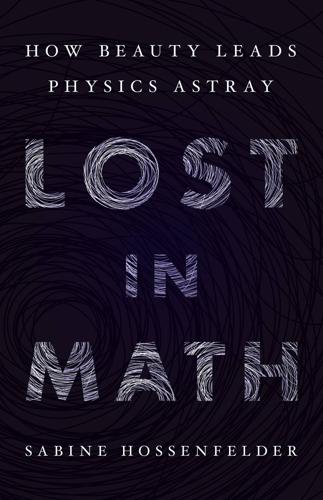
Lost in Math: How Beauty Leads Physics Astray
by
Sabine Hossenfelder
Published 11 Jun 2018
The followers of vortex theory were convinced by the theory’s beauty despite the utter lack of evidence. In 1883, in a brief review for the magazine Nature, Oliver Lodge referred to vortex theory as “beautiful” and “a theory about which one may almost dare to say that it deserves to be true.”33 Albert Michelson (who would go on to win a Nobel Prize) wrote in 1903 that vortex theory “ought to be true even if it is not.”34 Another fan was James Clerk Maxwell, who opined: But the greatest recommendation of [vortex] theory, from a philosophical point of view, is that its success in explaining phenomena does not depend on the ingenuity with which its contrivers “save appearances,” by introducing first one hypothetical force and then another.
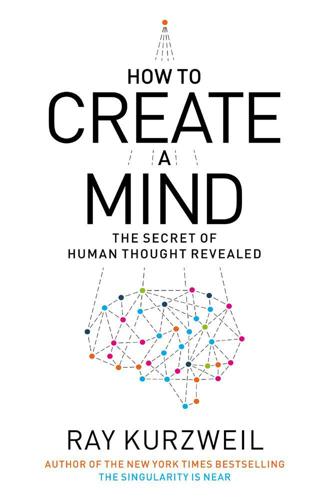
How to Create a Mind: The Secret of Human Thought Revealed
by
Ray Kurzweil
Published 13 Nov 2012
The conclusion at that time was that light waves must be traveling through some sort of medium; after all, ocean waves traveled through water and sound waves traveled through air and other materials. Scientists called the medium through which light waves travel the “ether.” The boy was also aware of the 1887 experiment by American scientists Albert Michelson (1852–1931) and Edward Morley (1838–1923) that attempted to confirm the existence of the ether. That experiment was based on the analogy of traveling in a rowboat up- and downstream in a river. If you are paddling at a fixed speed, then your speed as measured from the shore will be faster if you are paddling with the stream as opposed to going against it.
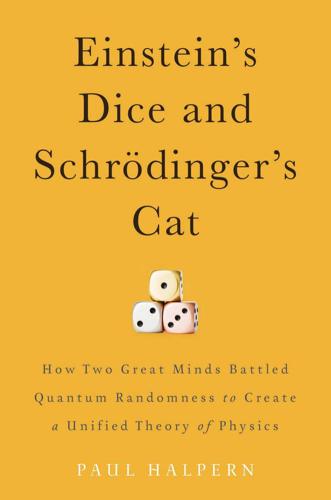
Einstein's Dice and Schrödinger's Cat: How Two Great Minds Battled Quantum Randomness to Create a Unified Theory of Physics
by
Paul Halpern
Published 13 Apr 2015
The idea that the speed of light in a vacuum was constant—or even that light could travel through pure emptiness—was not widely accepted at the time Einstein was pondering this question. Many physicists of the day believed that light moved through an invisible substance called the “luminiferous aether,” or just “aether” for short. Earth’s motion relative to the aether should thereby be detectable. However, a well-known experiment in 1887 by American physicists Albert Michelson and Edward Morley had failed to detect such an effect. To try to reconcile light’s behavior with Newton’s laws of mechanics, Irish physicist Edward FitzGerald and, independently, Dutch physicist Henrik Lorentz suggested that fast-moving objects compress along their directions of motion. Such a shortening, called the Lorentz-FitzGerald 27 Einstein’s Dice and Schrödinger’s Cat contraction, would squash the instruments of the Michelson-Morley experiment in such a way to make it appear that the speed of light was always constant.

The Knowledge Machine: How Irrationality Created Modern Science
by
Michael Strevens
Published 12 Oct 2020
TWO PRINCIPAL PARTS of my explanation of science’s power, of my contribution to the Great Method Debate, are now in place: the iron rule’s procedural consensus and the Baconian convergence that the consensus makes possible. There is one further element to the story. In a basement in Ohio in 1887, Albert Michelson and Edward Morley sent two beams of light flying. One beam was traveling in the same direction as the earth’s motion around the sun; the other was traveling at right angles to the first. After traversing identical distances, the beams were reflected back to their source and compared. If their waveforms, when superimposed, failed to overlap exactly, it was because one was taking longer to make its journey than the other—which is precisely what Michelson and Morley expected.
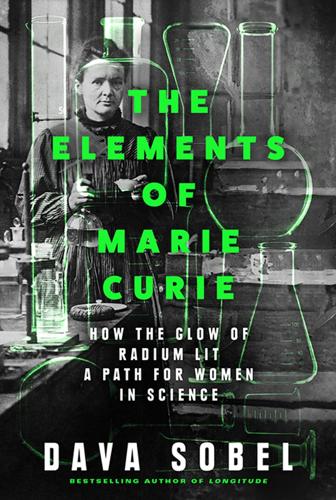
The Elements of Marie Curie
by
Dava Sobel
Published 20 Aug 2024
A young Danish physicist named Niels Bohr was expected to attend the conference to expound his theory of the way an atom’s electrons distributed themselves around the nucleus in a series of nested orbital shells. But unfortunately Bohr pled illness from overwork and stayed home in Copenhagen. Albert Einstein, the only German-born scientist asked to enter Belgium so soon after the war, declined the invitation and sent a written contribution. Two Americans, Albert Michelson and Robert Millikan, were the first of their countrymen to join the exclusive gathering. Once again, Mme. Curie stood out as the only woman among the twenty-five participants. “I’m not doing too badly, but I am tired,” she wrote her daughters midway through the week. The discussions went on all day, she said, and the topics were so interesting that one wore oneself out taking everything in.
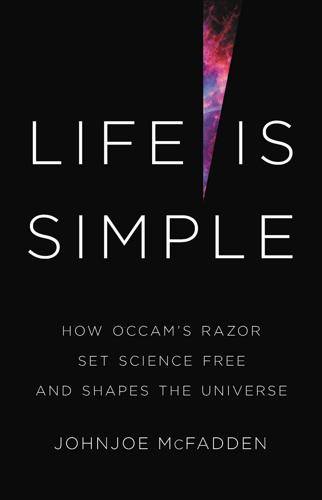
Life Is Simple: How Occam's Razor Set Science Free and Shapes the Universe
by
Johnjoe McFadden
Published 27 Sep 2021
If it is some kind of invisible substrate for light waves that fills all of space then it should be possible to measure the speed of an object relative to the aether, just as you can measure the speed of a boat relative to the water in the sea. The task is of course much more challenging, as light waves move at around 300 million metres per second, massively faster than any object on earth. However, in 1887, the American scientists Albert Michelson and Edward Morley came up with the clever idea of measuring light speed relative to the fastest object on earth which, relative to the sun, is the earth itself. The earth spins on its axis at around 447 metres per second as well as orbiting the sun at around 30,000 metres per second. The team realised that, rather like the Doppler effect, the speed of light should be different if measured in the direction of the earth’s motion, i.e. through the aether, or perpendicular to that direction.
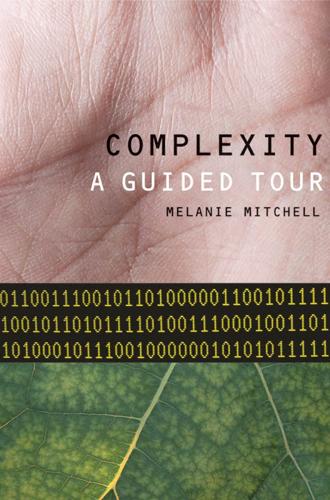
Complexity: A Guided Tour
by
Melanie Mitchell
Published 31 Mar 2009
René Descartes, one of reductionism’s earliest proponents, described his own scientific method thus: “to divide all the difficulties under examination into as many parts as possible, and as many as were required to solve them in the best way” and “to conduct my thoughts in a given order, beginning with the simplest and most easily understood objects, and gradually ascending, as it were step by step, to the knowledge of the most complex.”1 Since the time of Descartes, Newton, and other founders of the modern scientific method until the beginning of the twentieth century, a chief goal of science has been a reductionist explanation of all phenomena in terms of fundamental physics. Many late nineteenth-century scientists agreed with the well-known words of physicist Albert Michelson, who proclaimed in 1894 that “it seems probable that most of the grand underlying principles have been firmly established and that further advances are to be sought chiefly in the rigorous application of these principles to all phenomena which come under our notice.” Of course within the next thirty years, physics would be revolutionized by the discoveries of relativity and quantum mechanics.
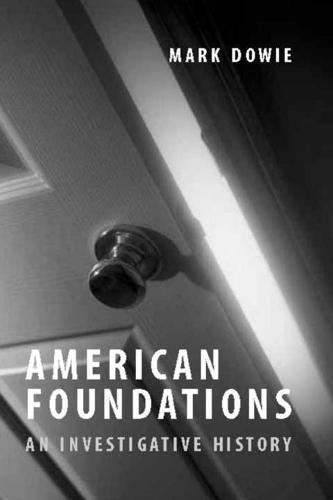
American Foundations: An Investigative History
by
Mark Dowie
Published 3 Oct 2009
"If there is a millionaire in the land who is at a loss for what to do with the surplus that has been committed to him as trustee," he wrote in 1889, "let him investigate the good that is flowing from chemical laboratories."' Rockefeller, on the other hand, seemed to prefer physics. In 1891, when he created the University of Chicago, he set aside a special fund for scientific research; the university used it to lure to its faculty Albert Michelson, the first American to win a Nobel Prize in physics. Gates also persuaded Rockefeller to support medical research on a long-term basis. "Disease with its attendant evils is undoubtedly the main single source of human misery," Gates wrote his boss, who was already intrigued by the immunological advances of Louis Pasteur!
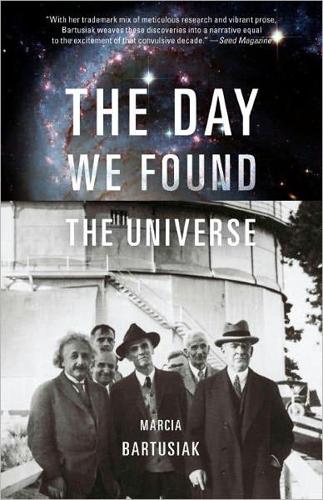
Day We Found the Universe
by
Marcia Bartusiak
Published 6 Apr 2009
Hubble compromised by taking science classes—mathematics, astronomy, physics, chemistry, geology—as well as the prerequisite courses in the classics, including heavy doses of Greek and Latin, that would prepare him for a legal career. In regard to learning science, the timing for Hubble was perfect. Though a relatively new institution, the University of Chicago had already attracted two top physicists, Albert Michelson and Robert Millikan, who would go on to receive Nobel Prizes for their seminal work. And the Yerkes Observatory, affiliated with the university, offered one of the best telescopes then in existence. The early 1900s was a time, Hubble later recalled, when the world was astir: “Motor cars, at last, were successfully competing with horses.

Lifespan: Why We Age—and Why We Don't Have To
by
David A. Sinclair
and
Matthew D. Laplante
Published 9 Sep 2019
—it is far more common for people not to see something coming. All of us are guilty of it. We extrapolate linearly. More people, more horses, more horse manure. More cars, more air pollution, always more climate change. But that’s not how it works. When technologies go exponential, even experts can be blindsided. The American physicist Albert Michelson, who won a Nobel Prize for measuring the speed of light, gave a speech at the University of Chicago in 1894, declaring that there was probably little else to discover in physics besides additional decimal places.1 He died in 1931, as quantum mechanics was in full swing. And in his 1995 book, The Road Ahead, Bill Gates made no mention of the internet, though he substantially revised it about a year later, humbly admitting that he had “vastly underestimated how important and how quickly” the internet would come to prominence.2 Kevin Kelly, the founding editor of Wired magazine, who has a better track record than most at predicting the future, has a golden rule: “Embrace things rather than try and fight them.

Radical Uncertainty: Decision-Making for an Unknowable Future
by
Mervyn King
and
John Kay
Published 5 Mar 2020
If so, he might have learnt that young economists were receiving a similar warning from that towering figure of mid-nineteenth-century thought John Stuart Mill, who told them: ‘Happily, there is nothing in the laws of Value which remains for the present or any future writer to clear up; the theory of the subject is complete.’ 10 A quarter century after Jolly, his verdict on his subject was reiterated by the irrepressible Lord Kelvin, who assured the British Academy for the Advancement of Science that, at least as far as physics was concerned, little advancement was possible or necessary; Albert Michelson, the first American scientist to be awarded a Nobel Prize, pronounced, ‘It seems probable that most of the grand underlying principles have been firmly established . . . An eminent physicist remarked that the future truths of physical science are to be looked for in the sixth place of decimals.’ 11 Perhaps the older Planck had Jolly’s advice in his mind when he suggested that science progressed only through the funerals of the previous generation.
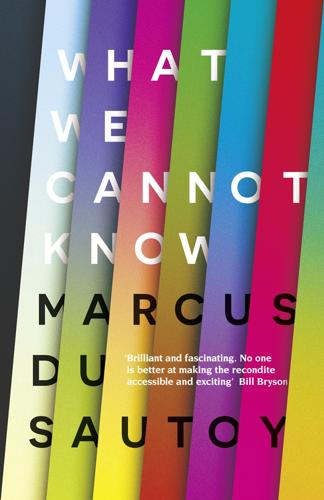
What We Cannot Know: Explorations at the Edge of Knowledge
by
Marcus Du Sautoy
Published 18 May 2016
He believed that you could place clocks across the universe, and once they had all been synched they would continue to show the same time at whatever point you were in the universe. Others were not so convinced. Newton’s arch-rival Gottfried Leibniz believed that time existed only as a relative concept. A discovery made in 1887 by American scientists Albert Michelson and Edward Morley ultimately led to Leibniz’s view winning out over Newton’s. The American scientists found that if we measure the speed of light in a vacuum, then, regardless of whether we are moving towards or away from the source of the light, the measurement remains the same. This revelation was the seed for Einstein’s discovery that time was not quite as absolute as Newton had envisioned.

How Emotions Are Made: The New Science of the Mind and Brain
by
Lisa Feldman Barrett
Published 6 Mar 2017
There is no known validity to these particular facial poses, and studies that use more objective methods like facial EMG and facial coding do not find evidence that people routinely make these movements in real life during episodes of emotion. Yet scientists continue to use the basic emotion method regardless. After all, it produces very consistent results.24 Each time a scientific “fact” is overturned it leads to new avenues for discovery. The physicist Albert Michelson won a Nobel Prize in 1907 for disproving a conjecture made by Aristotle, that light travels through empty space via a hypothetical substance called luminiferous ether. His detective work set the stage for Albert Einstein’s theory of relativity. In our case, we’ve cast substantial doubt on the evidence for universal emotions.
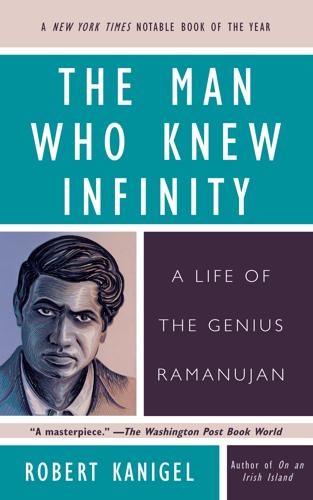
The Man Who Knew Infinity: A Life of the Genius Ramanujan
by
Robert Kanigel
Published 25 Apr 2016
Then, two weeks later, on December 18, Hardy and eleven other mathematicians—Hobson and Baker were among them, as were Bromwich, Littlewood, Forsyth, and Alfred North Whitehead, Bertrand Russell’s collaborator on Principia Mathematica—together put him up for an honor more esteemed by far than any fellowship of a Cambridge college: they signed the Certificate of a Candidate for Election that nominated him to become a Fellow of the Royal Society. The Royal Society was Britain’s preeminent scientific body, going back to 1660 when Christopher Wren and Robert Boyles helped found it. There were, at about the time Hardy put up Ramanujan, 39 foreign members, including the Russian Ivan Pavlov, the American Albert Michelson (of Michelson-Morley experiment fame), and 6 other Nobel Prize winners. The Royal Society counted in all 464 members in physics, chemistry, biology, mathematics, and every branch of science. Being an F.R.S. meant that forevermore those three little letters would be appended to your name, appear on your own scientific papers, and on letters addressed to you.
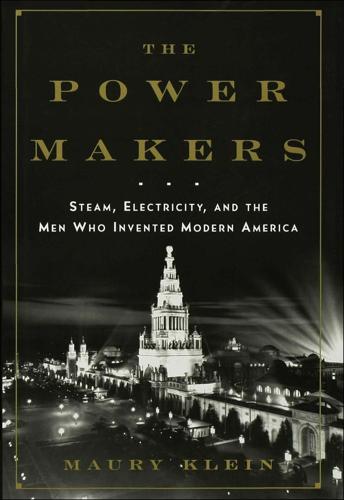
The Power Makers
by
Maury Klein
Published 26 May 2008
As such it was considered to be motionless, a constant through which all other bodies, including the earth as it orbited the sun, traveled. Light also traveled through the ether, which explained why distant stars were visible.70 However, this notion of the ether received an unexpected and fatal blow from, of all things, a failed experiment by physicist Albert Michelson. He first became absorbed in the task of measuring accurately the speed of light. Little progress had been made since the work of Danish astronomer Olaus Roemer in 1676, but Michelson managed in 1879 to come up with the figure of 186,320 miles a second, remarkably close to the 186,282 miles later accepted.